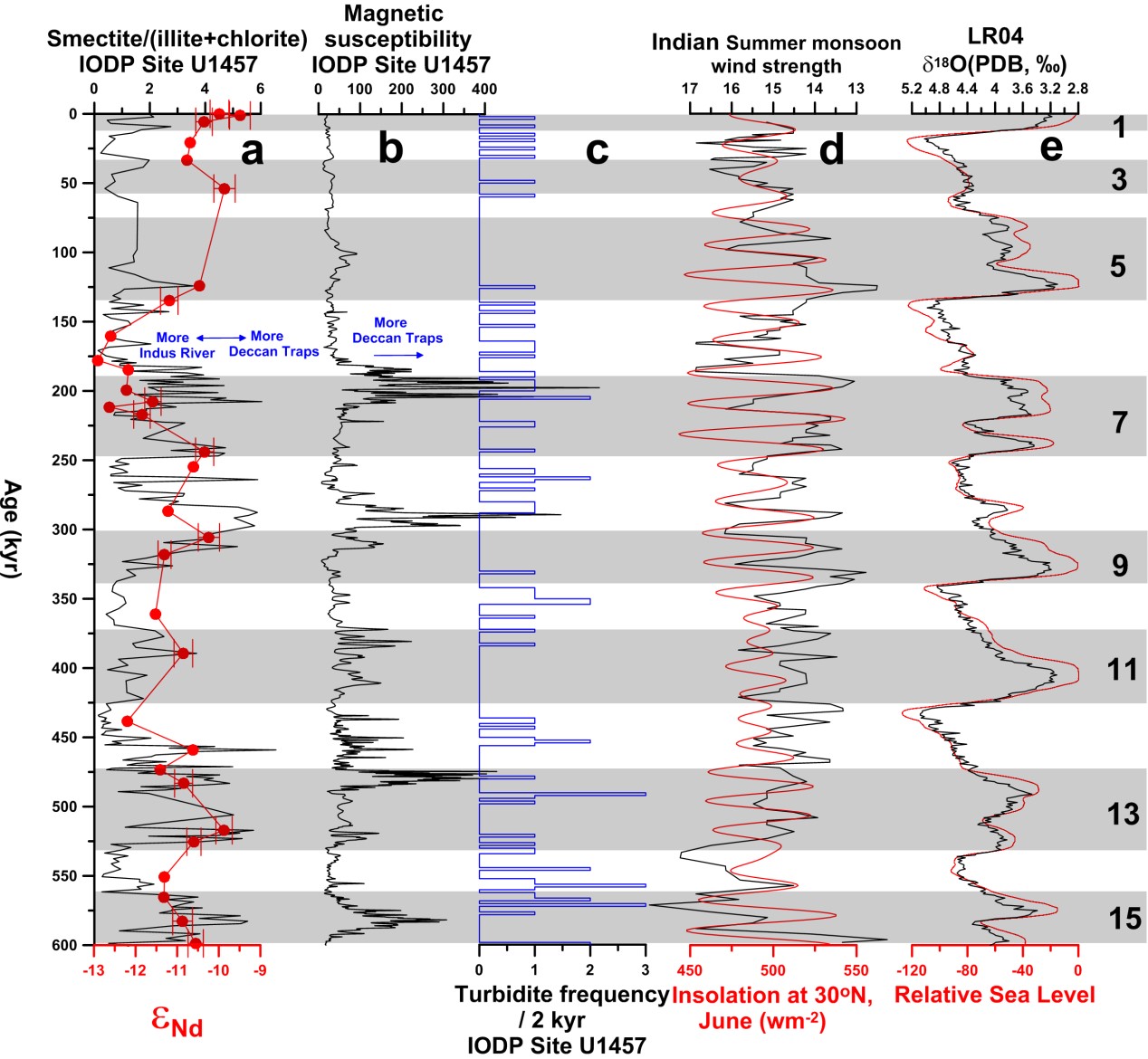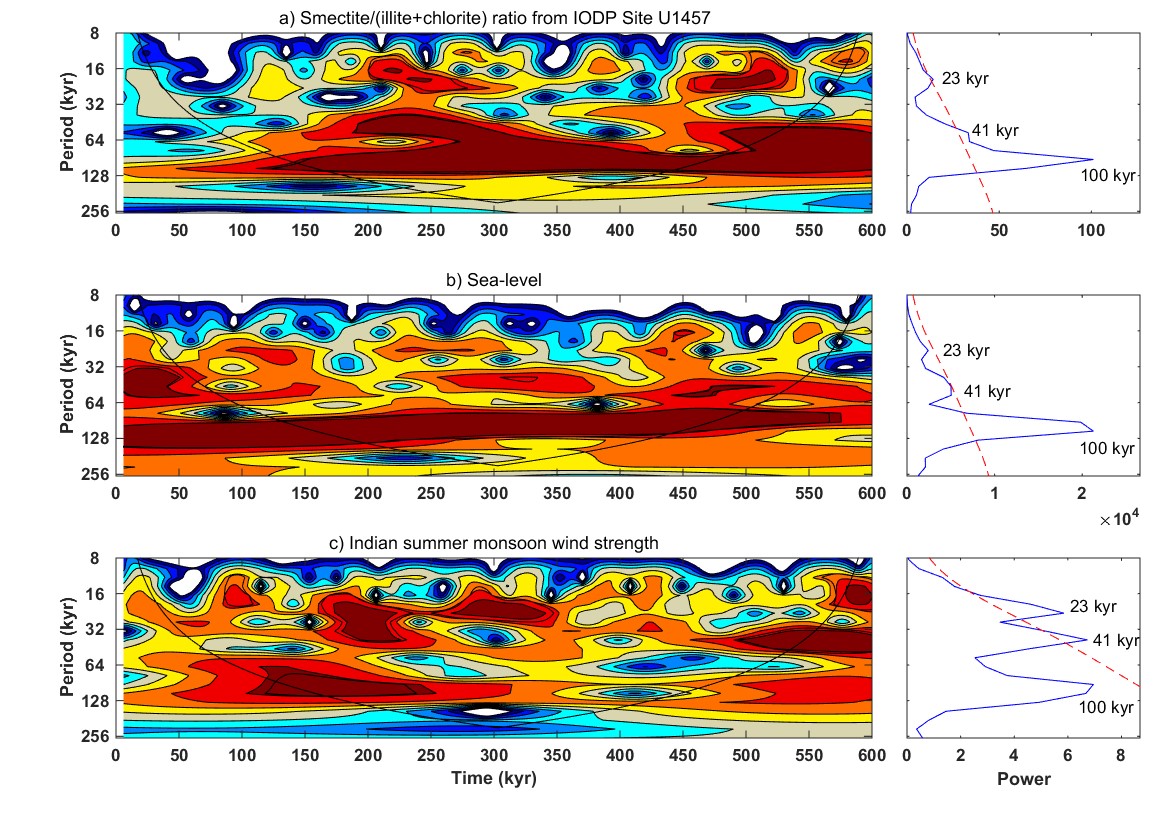
Recently, Quaternary Science Reviews publishes new results of International Ocean Discovery Program (IODP) Expedition 355 from cooperative studies of Dr. YU Zhaojie with colleagues from USA, France, Germany and India. The three studies from IODP Expedition 355 indicate a dominant influence of sea-level variations on sediment trans.
The IODP is one of the most influential marine research collaboration program that explores Earth's history and dynamics using ocean-going research platforms to recover data recorded in seafloor sediments and rocks and to monitor sub-seafloor environments.
The IODP Expedition 355 (Arabian Sea Monsoon) started in Colombo, Sri Lanka from March 31 to May 30, 2015, aiming to better understand the co-evolution of Tibetan plateau uplift, Indian summer monsoon evolution, weathering and erosion of Himalaya through multiple time scales.
Dr. YU Zhaojie from the Institute of Oceanology of the Chinese Academy of Sciences (IOCAS), invoked clay mineralogy, detrital grain-size and Sr-Nd isotopic compositions analysis on sediments from the Laxmi basin, eastern Arabian Sea in order to reconstruct a high-resolution orbital sediment export record to the Indus deep-sea fan and estimate the relative importance of Indian summer monsoon precipitation and sea-level.
The sediment sources during glacial-interglacial cycles as well as position and width of turbidite layers were carefully identified and a high-resolution of smectite/(illite+chlorite) record indicating a balance of sediments inputs from Indus River and Deccan Traps to IODP Site U1457 was established.
The results indicated that more turbidite deposits were accompanied by Indus River sediments during glacial sea-level lowstands, while conversely, more hemipelagic deposits were associated with Deccan Traps sediments during interglacial sea-level highstands.
The wavelet and cross-spectral analyses of smectite/(illite+chlorite) record versus sea-level and Indian summer monsoon suggest a strong mechanistic link between the sea-level variations and sediment transportation from the large river basin to the deep-sea fan, while the influence of monsoon precipitation is subordinate.
These results shed light on the dominant role of sea-level variations in comparing to the summer monsoon precipitation in deterring the sediment transportation from a source-to-sink perspective.
The study was supported by IODP France and National Natural Science Foundation of China.

Figure 1. Bathymetric map showing the location of IODP Site U1457 as well as the nearby geologic structures (Arabian plate, Makran, Indo-Gangetic plain, Deccan Traps and Peninsular Gneisses) and marine sediment cores noted in this paper. (Image by IOCAS)

Figure 2. Comparison of a) smectite/(illite t chlorite) ratio (black line) and εNd (red line) from IODP Site U1457 (this study); b) magnetic susceptibility variation from IODP Site U1457 (Pandey et al., 2015); c) turbidite frequency in core from IODP Site U1457 (this study); d) Indian summer monsoon wind strength reconstructed from lithogenic grain size of ODP Site 722 (Clemens et al., 1996) and insolation at 30°N in June (Laskar et al., 2004); e) stacked global benthic d18O record of LR04 (Lisiecki and Raymo, 2005) and global sea-level variation (Bintanja et al., 2005). (Image by IOCAS)

Figure 3. Wavelet power analysis for a) smectite/(illite + chlorite) ratio from IODP Site U1457 (this study); b) global sea-level variation (Bintanja et al., 2005); c) Indian summer monsoon wind strength reconstructed from lithogenic grain size of ODP Site 722 (Clemens et al., 1996). (Image by IOCAS)

86-10-68597521 (day)
86-10-68597289 (night)

86-10-68511095 (day)
86-10-68512458 (night)

cas_en@cas.cn

52 Sanlihe Rd., Xicheng District,
Beijing, China (100864)

